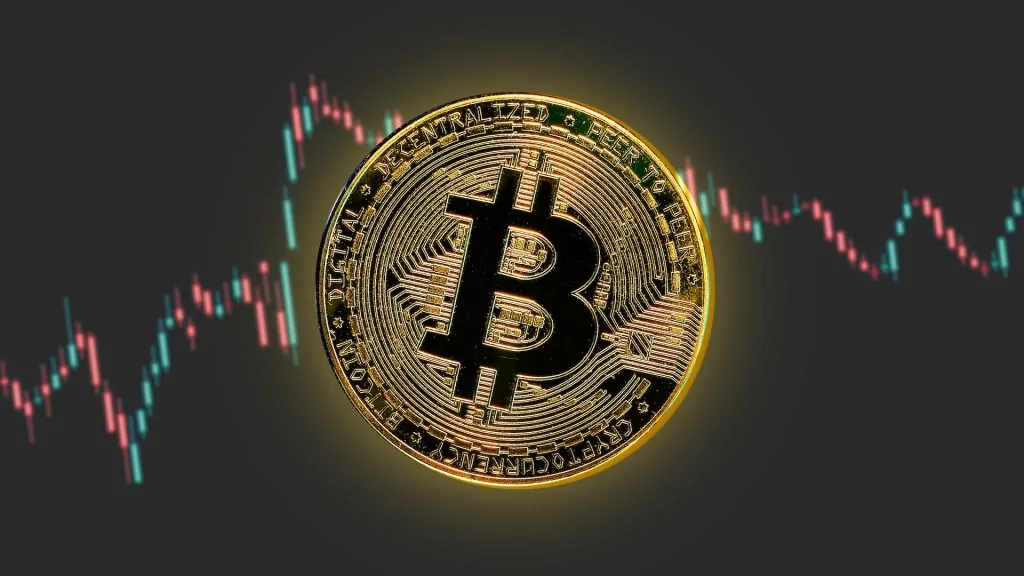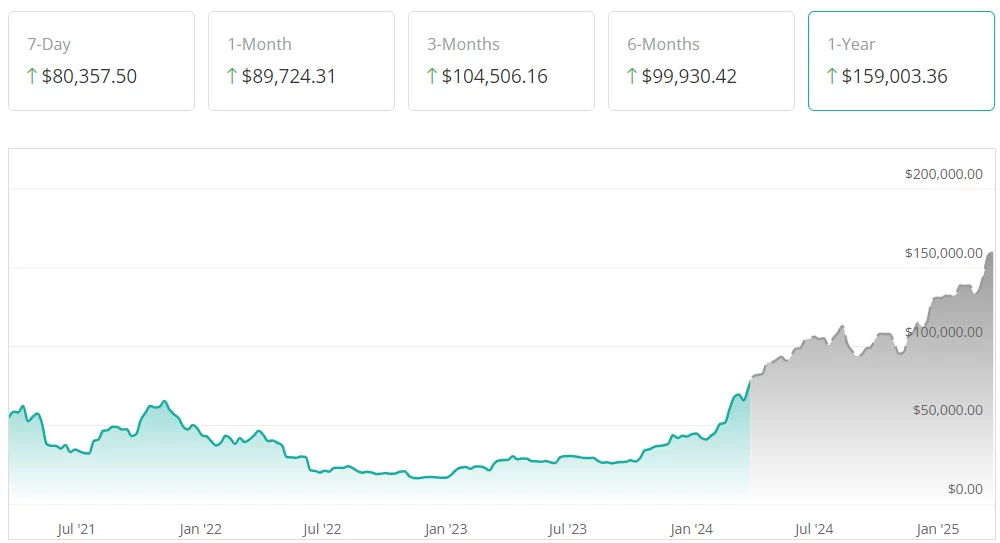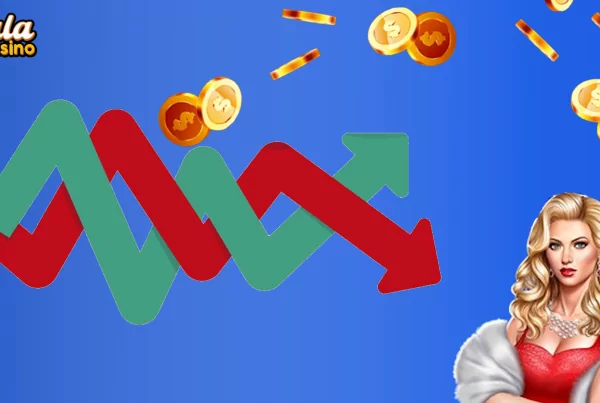
The next Bitcoin halving is expected to take place on April 20, 2024. Keep in mind that the halving might happen a couple of days sooner or later, as it will be impacted by BTC mining difficulty and the speed at which new blockchain blocks are produced.
Bitcoin halving is a pre-programmed event that happens roughly every 4 years (210,000 blocks, to be exact) and reduces the rate at which new Bitcoins are created and introduced into circulation. The original reward for mining a block was 50 BTC when Bitcoin was first created. With the upcoming halving, the reward will be cut from 6.25 BTC to 3.125 BTC.
In this article, we will explain when the next BTC halving will happen, examine the Bitcoin halving cycle history, and look into what the future might hold for the upcoming halving.
Key takeaways:
- The fourth Bitcoin halving is anticipated around mid-April 2024, with April 20 as the most likely date, depending on network factors influencing block production speed.
- Bitcoin halvings, seen as bullish events, reduce BTC inflation and enhance its value, making it a promising long-term investment.
- Previous Bitcoin halvings occurred in 2012, 2016, and 2020, each time significantly reducing mining rewards and leading to price increases.
- Bitcoin’s price is predicted to peak at $115,000 in the summer following the 2024 halving, and potentially reach as high as $150,000 by early 2025.
When is the next BTC halving?
According to most estimates, the next Bitcoin halving, the fourth so far, will take place in mid-April 2024, with April 20 being the most likely day. However, the exact date will depend on a combination of network factors that will have an impact on the speed of block generation. The speed at which new Bitcoin blocks are produced is determined by the network’s difficulty adjustment algorithm and the collective computing power of miners in the network.
Bitcoin halving dates are one of the most important events in the crypto market. Bitcoin has climbed higher every halving cycle so far. If the historical trend were to continue, the Bitcoin Rainbow Chart predicts that BTC could trade between an upper price bound of roughly $757,815 and a lower bound of $71,740 during the next halving cycle.

Bitcoin halving dates history
The first Bitcoin halving took place in 2012, the second in 2016, and the third in 2020, with each halving cycle seeing BTC climb to new heights. In the following sections, we are going to examine the price movements of BTC during each cycle and check how the Bitcoin halving rewards decreased.
BTC halving dates:
| Date | Block height | Block reward decrease | BTC Price | |
|---|---|---|---|---|
| First halving | Nov. 28, 2012 | 210,000 | from 50 BTC to 25 BTC | $12.3 |
| Second halving | Jul. 9, 2016 | 420,000 | from 25 BTC to 12.5 BTC | $680 |
| Third halving | May 11, 2020 | 630,000 | from 12.5 BTC to 6.25 BTC | $8,590 |
| Fourth halving | Apr. 20 2024 (estimate) | 840,000 | from 6.25 BTC to 3.125 BTC | – |
BTC price lows and highs during each cycle:
| Lowest price | Highest price | |
|---|---|---|
| First halving cycle (Nov. 2012 – Jul. 2016) | $12.4 (Dec. 2012) | $1,170 (Nov. 2013) |
| Second halving cycle (Jul. 2016 – May 2020) | $535 (Aug. 2016) | $19,400 (Dec. 2017) |
| Third halving cycle (May 2020 – Apr. 2024)* | $8,590 (May 2020) | $73,600 (Mar. 2024) |
Pre-halving period (January 3, 2009 – November 28, 2012)
The period between the launch of the Bitcoin network in January 2009 and the first halving in November 2012 is sometimes referred to as the “pre-halving period”. During that time, the reward for successfully mining a new Bitcoin block was 50 BTC.
During that time, Bitcoin was known only to a niche audience, primarily consisting of programmers and cryptographers. In addition, 10.5 million BTC were mined during that time (exactly half of Bitcoin’s total supply of 21 million coins). Bitcoin inventor Satoshi Nakamoto is believed to have mined the most coins during the period, with some estimates attributing more than 1 million BTC that were mined to Nakamoto. Interestingly, they never moved or sold any of that BTC in the time since.

First Bitcoin halving cycle (November 28, 2012 – July 9, 2016)
Following the period after the Genesis block, during which mining rewards were set at 50 BTC, the first Bitcoin halving ever took place on November 28, 2012. The rewards were cut to 25 BTC.
While Bitcoin was still in its infancy, a wider circle of people became interested in the digital currency that had already made some early investors millionaires. Bitcoin was first featured in mainstream outlets, particularly in November 2013, when the currency broke the psychological price barrier at $1,000.

Second Bitcoin halving cycle (July 9, 2016 – May 11, 2020)
The second BTC halving occurred on July 9, 2016, reducing Bitcoin mining rewards from 25 BTC to 12.5 BTC. About a year after the halving event, Bitcoin reached an all-time high above $19,000.
At this point in time, cryptocurrency became mainstream. Thousands of new cryptocurrencies were launched during the second halving cycle. Initial coin offerings (ICOs) became very popular during that time, giving investors the opportunity to participate in new projects by committing their BTC and other funds. The so-called “ICO craze” became big enough to draw attention from the US top financial watchdog, the Securities and Exchange Commission (SEC), which ultimately prohibited ICOs for US customers.

Third Bitcoin halving cycle (May 11, 2020 – TBD)
The third BTC halving took place in May 2020, bringing block rewards to 6.25 BTC. While the current halving cycle is not yet finished, we can say that it followed a similar pattern to previous ones – a new ATH was reached about a year after the halving. However, given that there is still about 10 months left in the current cycle, we could see Bitcoin break the pattern and post a new peak before the next halving event.
With Bitcoin more than a decade old, the digital currency has firmly established itself as a new financial asset used by both retail and institutional investors. While there are still many unknowns when it comes to BTC, it is safe to say that it is here to stay for the long haul.

Bitcoin price prediction 2024-2025: Here’s what to expect as the next BTC halving approaches
With the next Bitcoin halving approaching, our price prediction algorithm forecasts that BTC might see a rally in the coming months, with BTC peaking at $115,000 during the summer. In addition, the rally is expected to persevere into the first half of 2025, with the price reaching an ATH of more than $150,000 in early 2025.
Please keep in mind that the forecast is based on the state of technical indicators as of March 2024, and could considerably change over time.

The bottom line: The next BTC halving will occur in April 2024
Bitcoin halvings are widely perceived as bullish catalysts not only for BTC but for the crypto market as a whole. Since they reduce the amount of new BTC entering circulation, halvings effectively reduce Bitcoin’s inflation rate and thus ensure that each BTC is more valuable, thanks to deflationary mechanics. This makes Bitcoin one of the best long-term crypto investments and, with the next halving quickly approaching, one of the best cryptos to buy right now.
If you want to learn more about the effects of Bitcoin halvings and explore additional price movement scenarios, go ahead and check the video below.



